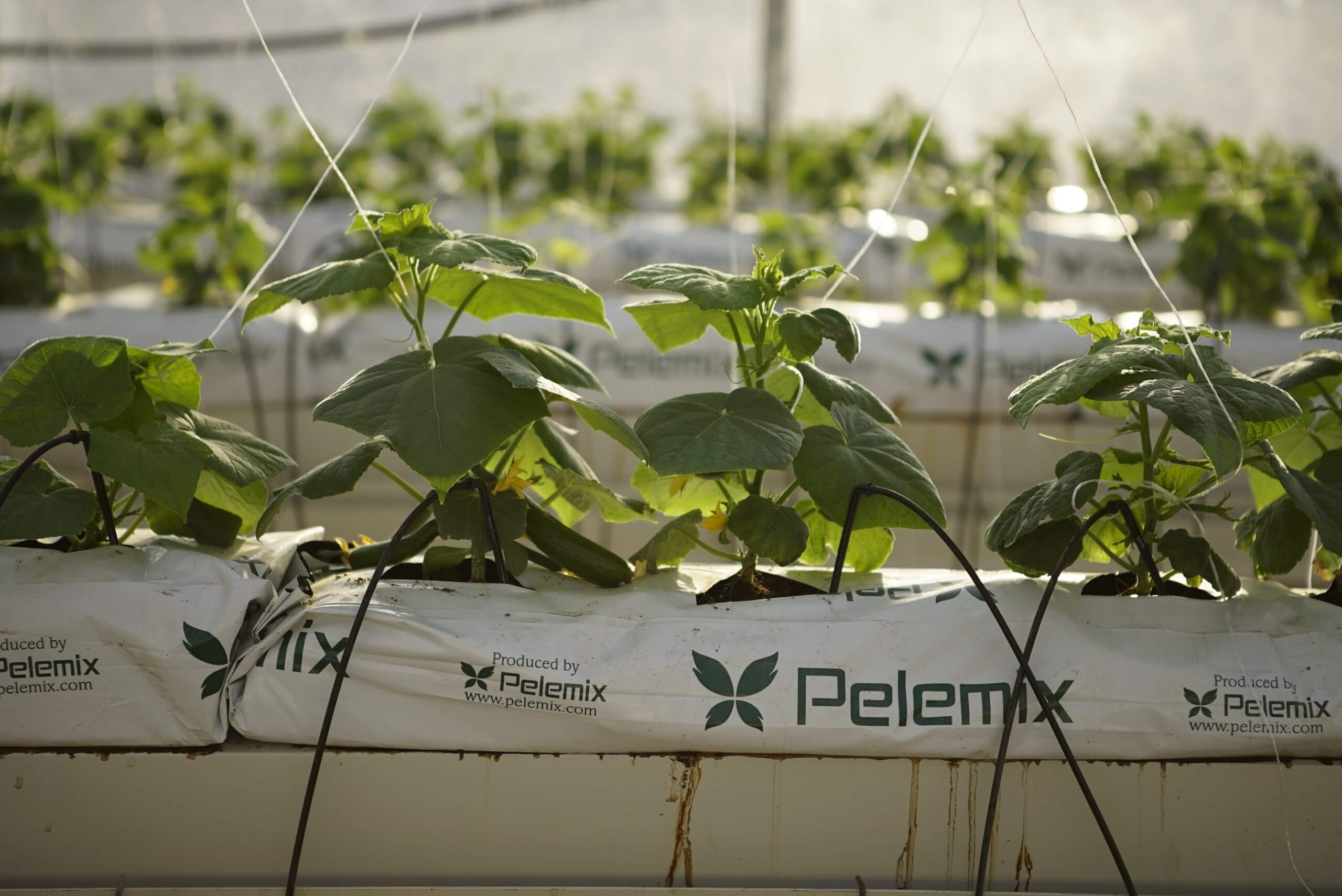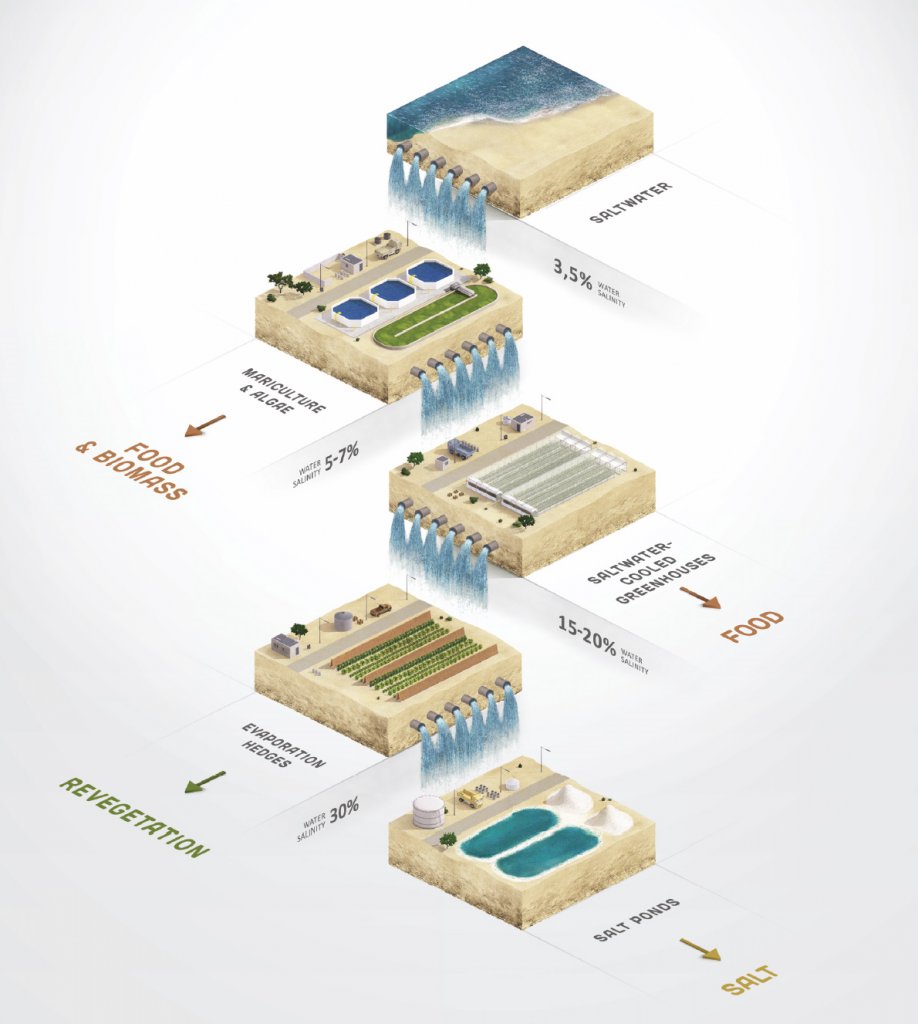By establishing a saltwater value chain, the Sahara Forest Project will make electricity generation from solar power more efficient, operate energy- and water-efficient salt water-cooled greenhouses for growing high-value crops in the desert, produce freshwater for irrigation or drinking, safely manage brine and harvest useful compounds from the resulting salt, grow biomass for energy purposes without competing with food cultivation, and revegetate desert lands. The synergies arising from integrating the technologies improve performance and economics compared to those of the individual components.
In addition to its commodity outputs of food, energy, and salt, the system also provides global climate benefits by sequestering CO2 in the facility’s plants and soils, and by pushing back the accelerating process of desertification through the revegetation of desert areas.
Core technologies
The three core components of the Sahara Forest Project are:
- Saltwater-cooled greenhouses – greenhouses that use saltwater to provide suitable growing conditions that enable year-round cultivation of high-value vegetable crops even in desert conditions. By using seawater to provide evaporative cooling and humidification, the crops’ water requirements are minimized and yields maximized with a minimal carbon footprint.
- Solar power for electricity and heat generation – using the sun’s energy to produce heat that is used to make steam to drive a steam turbine, which in turn drives a generator to produce electricity.
- Technologies for desert revegetation – a collection of practices and technologies for establishing outside vegetation in arid environments.
Technology extensions
By establishing a commercially viable way to bring saltwater into the desert, the Sahara Forest Project works as an enabling technology, creating opportunities for a wide range of businesses to develop alongside it. These include salt extraction, traditional desalination, algae production, halophyte cultivation, PVs, mariculture, bioenergy, and more.


